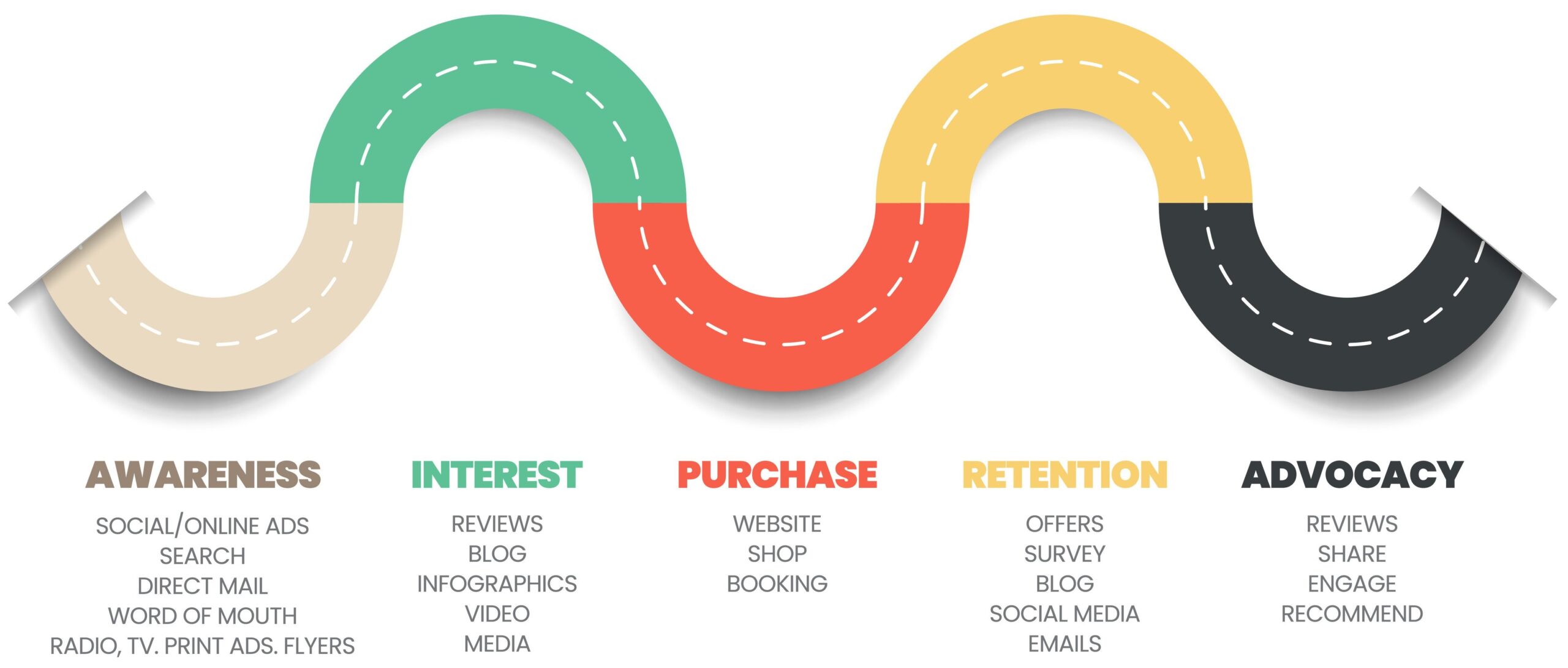The Gist
- AI dominance. AI-driven content creation becomes essential for crafting what users want to see.
- Influencer shift. Niche influencers become crucial, driving deep engagement with specialized communities.
- Seamless shopping. Social commerce evolves, providing seamless experiences within the customer journey.
More than 5 billion people worldwide currently use social media, around 65% of the global population, according to Statista. And experts predict that number will grow to more than 6 billion social media users by 2028.
No one can deny the presence that social media has in our world — or the power it holds for business leaders looking to grow their brands, gain loyal followings and promote their offerings.
The best way to capture the hearts and minds of those online? Find out which social media trends will impact them the most.
Table of Contents
Top Social Media Trends for 2025
What’s hot and what’s not online changes day to day. While some of the biggest social media trends may have staying power in 2025, you might be surprised about some of the predicted changes.
1. AI-Generated Content
One big social media trend everyone is talking about? Where AI fits in into content creation, both written and visual.
In fact, according to CMSWire’s State of the Digital Customer Experience, DCX and marketing teams said they’re using generative AI primarily for content creation and enhancement, particularly for short-form content like social media.
“The ability to generate high-quality content fast, and at scale, is changing the game for marketers,” said Darrell Alfonso, director of marketing strategy & operations at Indeed.com. What’s compelling about this, he explained, is that it reduces the creative barrier, allowing marketers to focus on strategy and value rather than spending hours on execution.
“But let me tell you, prompt engineering is going to be a key skill here,” Alfonso added. “The better you can ‘talk’ to these AI tools, the better your output will be. It still takes some practice, but once you get the hang of it, AI becomes your biggest creative partner.”
Related Article: Staying Human While Using Generative AI Tools for Content Marketing
2. Micro-Influencer Marketing
Influencer marketing has been a part of social media for years now, and it’s not going away anytime soon. In fact, the value of global influencer marketing has more than tripled since 2019.
According to Jenny Li Fowler, director of social media strategy at MIT and author of “Organic Social Media,” it’s important to spend time identifying the right niche influencers to collaborate with. “If you take the time to find the right micro-influencers to work with, I feel the results will pay dividends and it might evolve into a long-term relationship with your brand,” she said.
Fowler said she believes this year will mark the rise of the micro-influencer, also known as a niche-influencer. “Unlike broad influencers or celebrities who appeal to a wide audience, niche influencers target a particular segment of the population with content related to a specific topic, hobby or industry.”
| Type of Influencer | Number of Followers |
| Mega Influencer | 1 Million+ Followers |
| Macro Influencer | 100,000 – 1 Million Followers |
| Micro Influencer | 1,000 – 100,000 Followers |
| Nano Influencer | Less Than 1,000 Followers |
Micro-influencers have smaller but highly engaged audiences that share a strong interest in the specialized content or community, explained Fowler. “Because of a niche influencer’s deep knowledge in a particular area or passion for a specific community, more brands and institutions are recognizing their intrinsic value and will further seek to find and collaborate with them.”
3. Social Commerce
People are drawn to social commerce because of the convenience that comes with making a purchase on a platform you already spend time on. Facebook currently reigns supreme as the top social network for shopping in the United States, followed closely by Instagram.
“The integration of shopping capabilities directly on social media platforms like Instagram, TikTok and Facebook has already taken off, but it will explode by 2025,” said Christina Stewart-Harfmann, adjunct instructor of digital marketing at Florida Atlantic University and founder of the Happy Family Blog.
Social commerce eliminates friction in the buying journey, she explained. Consumers discover a product and buy it seamlessly, creating a more immersive and direct path to purchase.
“If your business sells physical products, begin optimizing your social media platforms for shopping,” she advised. “Use Instagram Shops, TikTok Shopping and Facebook Shops to create seamless purchasing experiences.”
4. Zero-Click Content
One social media trend that Alfonso predicted will take off is zero-click content, a concept popularized by Amanda Natividad, VP of marketing at SparkToro.
Zero-click content is exactly what it sounds like — content that offers up valuable insights or engaging material without the need to click. Think: a Twitter thread, LinkedIn post or TikTok video that doesn’t require someone to click to learn more or get the full experience.
“It’s about giving your audience value right where they are,” said Alfonso. “People don’t want to click through to a website to get insights — they want it now.”
Consumers are tired of jumping through hoops to get value, he added, and zero-click content is the solution. “It’s a trend that’s here to stay because it prioritizes the user experience.”
5. Short-Form Video
Short-form video has been popular for a while, and it will remain a top social media trend in 2025. Vine’s claim to fame (when it launched in 2013) was its six-second looping videos. Soon after, TikTok, Instagram Reels and YouTube Shorts capitalized on this media movement.
TikTok alone has nearly doubled its monthly users from 2020 to 2024, and now holds the spot for the fifth most popular social media network worldwide.
Short-form video will continue to be a dominant content type, said Stewart-Harfmann, recommending that marketers invest in high-quality video production tools and talent. “Stay agile, so you can quickly adapt to the newest trends in editing styles, sounds and platform algorithms.”
Short-form video captures attention quickly and encourages higher engagement rates, she explained. “It’s particularly effective for brand storytelling, product demonstrations, and user-generated content.”
Related Article: Crafting a Video Content Strategy for Greater Social Media Impact
6. Long-Form Content
On the other hand, there’s a cyclical nature to short- and long-form content, said Alfonso. “We’ve seen consumers get addicted to short-form content — TikToks, Reels, etc. — but as attention spans start to crave depth, I think we’ll see a shift back toward more substantive, long-form content.”
It’s a cycle that happens again and again, he continued. People get fatigued by one format and begin to crave the opposite. “Smart marketers will need to balance both short and long-form strategies to stay ahead of this shift.”
Consumers want both types of content depending on where they are in their journey, Alfonso explained. Types of long-form content you can capitalize on include:
- Blog posts
- Webinars
- Podcasts
- Ebooks
- Whitepapers
- Research reports
- Video tutorials
7. Data-Backed Personalization
People want personalization from the brands they interact with. And the brands that get it right see big benefits. A Deloitte report found that nearly 75% of consumers are more likely to purchase from brands that deliver personalized experiences — and they spend 37% more with those brands.
The big challenge? Getting that personalization right by truly understanding customer priorities. That’s where data comes in.
“Start collecting and analyzing customer data to personalize every touchpoint in your customer journey,” recommended Stewart-Harfmann. “Tools like Google Analytics 4, HubSpot and Klaviyo can help you track behaviors and create more targeted campaigns.”

AI tools can also help these efforts by automating data analysis and allowing for more accurate predictions of consumer needs and behaviors. That same Deloitte report found that one-third of brands have already invested in generative AI to support personalization.
8. A Shift to LinkedIn
Another big social media trend? More and more professionals, experts and organizations are making LinkedIn their primary platform, according to Fowler.
It’s not that they’re leaving X, she added. But more of the sharing and engagement you once saw on Twitter/X is now happening on the professional networking site.
“When Elon Musk bought Twitter and rebranded it as X there was a lot of chatter among social media professionals and users about which micro-blogging platform would replace X,” Fowler said. “I was always skeptical of this thinking because technically, there is no replacing a platform with another platform. It’s not like every user of a platform is given a memo and unanimously decides to hop onto a platform together and continue the conversation there.”
However, she continued, it seems like LinkedIn is becoming the platform of choice for organic, in-the-moment conversations.
“For example, I used to feel confident that I wouldn’t see any TV spoilers, or more recently, Olympic result spoilers on LinkedIn but that wasn’t the case,” she added. “Now I have to avoid LinkedIn too if there’s something I’m trying to not see or learn ahead of time.”
9. Email Newsletters
Email newsletters are an area seeing explosive growth in terms of subscribers and revenue, said Alfonso. A survey from Storydoc found that 90% of Americans subscribe to at least one newsletter. And 74% said they subscribe to between one and 10.
One big benefit of newsletter, Alfonso added, is that they give creators and brands a direct, algorithm-free way to engage with people. “With social platforms constantly shifting, email is becoming the most reliable way to build and maintain relationships with your audience.”
Start building your list now, he recommended. Experiment with content formats, and be consistent. “As social platforms get noisier, email will be your most reliable way to connect with your audience.”
Fowler added that there’s also a huge opportunity with LinkedIn newsletters. “If you currently have a newsletter, I would recommend uploading the content to LinkedIn directly and creating an in-platform newsletter for that audience.”
10. User-Generated Content
Consumers trust content created by other users over branded advertisements, said Stewart-Harfmann. Consider one of the biggest forms of user-generated content: reviews. One recent survey found that 99% of surveyed consumers rely on online reviews before they make a purchase.
“UGC serves as social proof, showcasing real-world applications and authentic experiences with products or services,” Stewart-Harfmann explained. “It not only drives higher engagement but also reduces content creation costs for brands.”
User-generated content is especially powerful in certain industries where visual appeal is critical, she added, such as:
- Fashion
- Travel
- Food
This type of content leverages the power of storytelling to build a deeper connection with audiences. As people share their personal stories and experiences, they create a narrative that resonates more authentically.
Related Article: The Art of Storytelling for Brands and Marketers
Dominate 2025 With These Social Media Trends
The social media trends set to take over are anything but business that’s usual. Imagine AI-generated content that’s slick, smart and cuts through the noise — coupled with micro-influencers who command their digital niches.
Mastering these top trends isn’t just about keeping up. It’s about setting the pace in a world where attention is the ultimate currency.
This post was originally published on this site be sure to check out more of their content







